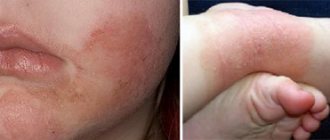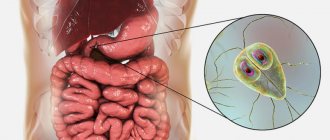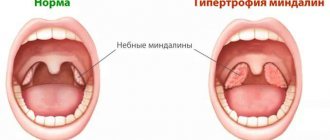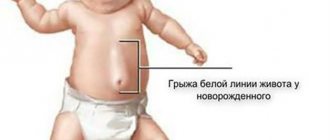Published: 10/26/2021 15:20:00 Updated: 10/26/2021
Giardiasis is a protozoal infection caused by the protozoan Giardia, which affects the small intestine. Manifested by indigestion. This infectious agent was first described by the Czech doctor D. F. Lambal in 1859. Not only the parasite, but also the disease was later named after him.
According to WHO, about 200 million people worldwide are infected with Giardia every year. Most often this happens in the countries of Asia, Africa, and Latin America. According to official data, up to 150 thousand infections with these protozoa are detected in Russia every year.
Giardiasis is often the cause of intestinal disorders in children of preschool and primary school age. In adults it is mostly asymptomatic.
Causes
Giardia is the simplest microscopic unicellular parasite from the class of flagellates.
In the human intestine it can be in two forms - vegetative and spore. Giardia reproduces by division and doubles in number every 10-12 hours. The habitat of vegetative forms is the upper section of the small intestine. Cysts are immobile, oval in shape and protected by a capsule. In this form, Giardia exists in the colon, as well as in the external environment. This way they can remain viable for a long time. The main causes of giardiasis are the entry of cysts into the human body. This happens when eating unwashed vegetables and fruits, violating hygiene rules, and using unboiled water. This route of transmission is called fecal-oral, since the source of the spread of giardiasis pathogens is an infected person who excretes cysts along with feces. Pets can also be carriers of giardiasis, and flies and cockroaches act as carriers.
Provoking factors can be overcrowding, living in a polluted environment, poor condition of water supply and sewerage systems, and non-compliance with sanitary and hygienic rules. A predisposition to the disease has been identified in children under the age of 10 years, in people with malnutrition or dystrophy, congenital defects of the biliary tract, diseases of the stomach and intestines with a reduced level of acidity, as well as in those adhering to diets with too low a protein content.
What are Giardia?
The name Giardia is an unofficial name. So people named them in honor of the Czech anatomist Lamblius Vilem Dusan, who discovered them in 1859. Giardia or giardia is the name adopted in medicine.
They belong to a very common order of protozoa - diplomonods. Giardia is quite small in microscopic size and cannot be seen without a microscope. Under the device we will be able to see small teardrop-shaped creatures. They have four pairs of tourniquets, with a suction disk, with the help of which they are attached to the intestines. These are not worms, because they are single-celled. In fact, it is between bacteria and multicellular organisms.
Anthony van Leeuwenhoek, the scientist who first tested the microscope, discovered Giardia, and further research was continued in the 19th century. Soviet pediatricians paid close attention to these tiny parasites; they considered them the main culprits of most intestinal disorders in children.
Classification
Signs of giardiasis may not be noticeable in a quarter of all cases.
This condition is called asymptomatic carriage. In this case, the person himself is not sick, but he becomes a source of infection for others. In half of all patients with giardiasis, the disease is subclinical. They also have no symptoms and do not consider themselves infected. Only diagnostics can help identify the disease.
And only in the remaining percentage of patients the disease has pronounced symptoms, which can be acute, subacute or chronic.
To treat or not to treat?
For many parents, the question is truly important and relevant. Sometimes discussions arise among pediatricians about the need to treat this invasion. But as our many years of experience show, even asymptomatic carriage can lead to a “surge” of the disease, its exacerbation. More often this happens when the body's defenses decrease. There are stages in the treatment of giardiasis: preparatory, antiparasitic treatment itself and a rehabilitation or recovery period. This means that treatment should always be comprehensive, aimed not only at removing the pathogen from the body, but also eliminating the cause, treating concomitant pathologies, and also increasing the body’s defenses. The duration of treatment can be up to 2-4-8 weeks depending on the patient’s condition.
Diet and nutrition should be aimed at creating conditions that worsen the reproduction of Giardia. It is necessary to increase the amount of products that are adsorbents and contain a significant amount of plant fiber (these are buckwheat, oat and millet porridges); bran, vegetables and fruits; Lingonberries, cranberries, unrefined vegetable oils. Carbohydrates are significantly limited, especially easily digestible ones. Fruit drinks, decoctions of choleretic herbs, and low-mineralized waters are recommended. Tubages with mineral water can be performed once a week. And the rehabilitation period (final) - sometimes the longest and no less important - is carried out with the aim of consolidating the results of treatment. Its main goals are to normalize the functional state of the digestive system, vitamin therapy, correct intestinal dysbiosis and improve immunity.
Please do not self-medicate! Any medications, including herbal preparations, can cause side effects!
Entrust your child to specialists!
Symptoms
Giardiasis often has mild symptoms and occurs without pronounced clinical manifestations.
In the typical form of the disease, the first symptoms begin to appear after the end of the incubation period, which lasts from 1 to 3 weeks, and during this time the disease has no manifestations. The intestinal form of the acute stage is characterized by:
- Pain in the right hypochondrium, in the navel area and rarely in the lower abdomen.
- Belching.
- Feeling of heaviness in the left side of the abdomen.
- Decreased appetite.
- Frequent bowel movements up to 3-5 times a day, which can give way to constipation.
- Nausea.
- Constant feeling of heaviness in the stomach.
- Flatulence.
In young children, mushy stools are observed.
The duration of the acute phase of the disease is 5-7 days, after which either recovery occurs or the infection transitions to a subacute chronic course. The hepatobiliary variant of giardiasis in women and men is manifested by pain in the liver area and indigestion.
Skin manifestations can be very different and include pallor, the appearance of a icteric tint, dryness and flaking, and a small allergic rash. Stomatitis may develop in the mouth, and jams or cracks may appear in the corners of the mouth.
The intoxication syndrome during giardiasis depends on how many cysts enter the body, as well as on the duration and severity of the disease. Patients may complain of headaches, dizziness, sleep disturbances, decreased performance, irritability, and emotional lability. Children may experience tics, hyperkinesis, and fainting.
Giardiasis is widespread, and the infection of children with Giardia, especially at early and school age, is several times higher than the corresponding indicators in adults. Among children attending children's groups (nurseries, kindergartens, schools), the incidence of Giardia is, according to various authors, up to 33%.
The clinical symptoms of giardiasis consist of several symptom complexes: syndrome of gastrointestinal tract damage and nutritional disorders, intoxication syndrome, including damage to the central nervous and autonomic nervous systems, allergic syndrome (damage to the skin and respiratory organs).
Gastrointestinal syndrome. The main clinical symptoms of giardiasis are diagnosed from the gastrointestinal tract, since giardia parasitizes the human intestine. The clinical picture of the disease is dominated by enteral disorders, the manifestations of which largely depend on the age of the child. Since the localization of Giardia is the small intestine, where absorption of nutrients occurs, some children develop malabsorption syndrome in the form of protein-energy and polyhypovitaminosis deficiency.
Symptoms of intoxication are directly dependent on the massiveness of the invasion, the severity of the disease, and its duration. Intoxication with giardiasis can manifest as hepatolienal syndrome and enlargement of peripheral lymph nodes, tonsils and adenoids. Long-term intoxication with giardiasis can also lead to the appearance of neurological symptoms such as teeth grinding (bruxism), tics. The effect of Giardia waste products can have a depressing effect on the central nervous system and cause rapid fatigue, decreased performance, and emotional tone. It is not for nothing that the discoverer of this pathogenic protozoan, D. F. Lambl, called it “a parasite of melancholy and sadness.”
Allergic manifestations on the skin, as well as from the respiratory, gastrointestinal tract and blood can occur with any form of giardiasis, regardless of the severity and severity of the process. It has long been known that in response to the introduction of a parasite, the level of IgE and the level of eosinophils in the peripheral blood increase [3, 4, 7] - hyperproduction of IgE and eosinophilia are the oldest phylogenetic methods of antiparasitic defense. This is precisely what can explain the fact, well known to clinicians, that parasitosis increases allergic symptoms in children with atopy and other forms of allergic manifestations.
It should be noted that the diagnosis of giardiasis is difficult due to the lack of pathognomonic symptoms, and giardiasis itself either overlaps with other diseases, or all the clinical manifestations of this parasitic infection are explained by other different reasons [4].
Examination for giardiasis is indicated for the following conditions (N.P. Shabalov, Yu.I. Staroverov, 1998) [5]: the presence of diseases of the digestive tract, a tendency towards their chronic course with frequent but moderate exacerbations; neurocirculatory dysfunction, especially in combination with gastrointestinal disorders; persistent blood eosinophilia; allergic manifestations.
According to the literature, immunological methods, for example, determination of antibodies to Giardia in blood serum, have high sensitivity and specificity.
Detection of specific IgM and IgG to Giardia antigens using immunofluorescence analysis (ELISA) is possible from the 12th–14th day of the disease.
After debridement, IgM quickly disappears. Their detection indicates giardiasis; IgG persists for up to 2 months after sanitation.
However, while the pathogenic properties of the parasite have not been sufficiently studied, in particular, giardiasis toxins have not been identified, it seems premature to rely only on the results of an immunological study in diagnosing giardiasis.
According to our observations, in children with persistent, long-term giardiasis, antibodies to giardia may not be detected in the blood serum. I.V. Kuimova and T.N. Tkachenko (2002) also found antibodies in less than half of children infected with Giardia [2], which, in our opinion, may indicate the ineffectiveness of humoral defense mechanisms.
Therefore, the absence of specific immunoglobulins in children with repeated detection of Giardia cysts is a poor prognostic sign and requires the doctor to use individual treatment regimens. Quite often, antibodies to Giardia are not detected in children with lymphatic-hypoplastic diathesis.
In modern conditions, the diagnosis of giardiasis is carried out by the routine method of fecal microscopy, but this method is largely subjective, much depends on the correctness of all stages of the study.
Stool samples are not always delivered to the laboratory “warm”, which is explained by the peculiarities of working with children: the child cannot empty his bowels when ordered. This obstacle can be overcome by using preservative solutions such as phenol-formalin mixture - Borrows reagent.
Proper preparation of the specimen for microscopy is also of great importance. The material must be applied to the glass in a thin, transparent layer, otherwise Giardia cysts are very difficult to see in the thickness of the detritus. Microscopy should be carried out immediately after preparation of the drug.
Under in vitro conditions, cysts can change their shape - “shrink”; their shell becomes uneven and merges with detritus, which makes identification much more difficult.
There is another “natural” obstacle that complicates the diagnosis of giardiasis - the “phenomenon of intermittent cystic discharge.” A child infected with giardiasis does not excrete cysts every day - the interval in the excretion of cysts is 8-14 days; to confirm the diagnosis in a laboratory, some persistence must be shown. Repeated multiple microscopy of feces is recommended.
It is known that the creation of unfavorable conditions promotes cyst formation and the release of cysts. It was noted that when choleretic and antigiardiasis drugs are prescribed, cysts are found much more often.
Various drugs are used as means of “provocation”, taking into account the age of the child, the severity of clinical manifestations and the presence of concomitant indications: infusion of corn silk, homeopathic drug cholevit, makmiror, furazolidone, metronidazole. During a single examination, Giardia cysts were detected in 92.5% of children in whom giardiasis was clinically suspected. Thus, following simple rules can improve the diagnosis of giardiasis.
Even greater persistence is required in the treatment of giardiasis. When prescribing antiprotozoal drugs, it should be remembered that therapy for this infection is aimed not so much at complete eradication of Giardia from the intestines, but at reducing the clinical manifestations of intoxication, gastrointestinal and allergic syndromes.
The effectiveness of the use of antigiardiasis drugs to reduce the clinical manifestations of allergic syndrome is quite pronounced. Using Macmiror or metronidazole as initial therapy, we noted clinical improvement within the first 7–10 days. In 85% of children with atopic dermatitis, a weakening of skin manifestations was noted; the phenomena of bronchial obstruction disappeared or decreased in 86% of children: shortness of breath and prolongation of exhalation disappeared, cough softened; the symptoms of allergic conjunctivitis decreased in all children.
A positive effect was observed both when prescribing Macmiror and when prescribing metronidazole. Unlike metronidazole and furazolidone, in the elimination of which the liver participates, Macmiror is almost completely eliminated by the kidneys, and the detoxification reserves of the liver are not affected.
It should be remembered that when prescribing medications effective against Lamblia intestinalis, such as metronidazole and furazolidone, on the second or third day of treatment the child’s well-being may deteriorate in the form of nausea, vomiting, itching, and skin rashes. Under the influence of treatment, the products of massive decay of the parasite are absorbed into the blood and become the cause of increased intoxication and sensitization of the body. The accumulation of parasite decay products in the intestines contributes to changes in the pH of the internal environment and the development of dysbiosis. This reaction is called the Yarisch-Geixheimer reaction; as a rule, it lasts no longer than 5–7 days. To reduce its manifestations during the course of treatment, it is recommended to carry out tubages with osmotic laxatives - 25-30% solution of magnesium sulfate, sorbitol, xylitol 1-2 times a week in children over 5-7 years old. Osmotic laxatives interfere with the absorption of parasite breakdown products and weaken the Jarisch-Geixheimer reaction.
Due to the danger of increased intoxication in the first days of treatment, it is not advisable to use antigiardiasis drugs in short courses. The duration of taking antigiardiasis drugs for 5–7 days does not lead to eradication of the parasite; after discontinuation of the drug, the clinical manifestations of the disease resume, and as a result, such a course may not lead to clinical improvement.
Reducing the manifestations of the Yarisch-Geixheimer reaction is also facilitated by the administration of systemic enzyme therapy drugs, in particular Wobenzyme, which is a complex of highly active enzymes of plant and animal origin. The drug is usually prescribed 3-5 tablets 3 times a day 40 minutes before meals, starting with the second 10-day course of treatment with Macmiror or metronidazole, for the entire period of the main and anti-relapse courses.
It should be noted that, firstly, in conditions of deepening microbiocenotic imbalance of the intestine, increasing endo- and exotoxicosis leads to sensitization of the body and creates the risk of the occurrence and development of food allergies (Fig.). The direct systemic and local participation of multienzyme drugs in the metabolism and absorption of toxins and sensitins significantly improves this situation.
Secondly, the plant components of the drug (papain and bromelain) are active in the colon, where the pH of the environment is shifted to the acidic side. This ensures deep proteolysis of proteins and glycoproteins, which apparently deprives opportunistic (and pathogenic) auxotroph microbes of growth factors and food substrates, while unpretentious components of a normal, balanced intestinal microbiocenotic system (for example, sugar-lytic microbes ) do not require proteins for their vital functions.
Thirdly, the immunomodulatory properties of the multienzyme drug, primarily the stimulation of macrophages, make it possible to resist antigenic hyperstimulation with subsequent depletion of local immunity [8].
Having summarized the experience of observing more than 400 patients with giardiasis, we believe that in order to obtain the maximum effect, it is advisable to prescribe an anti-giardiasis drug in two 10-day courses with a 5-day break between them.
During this time, we observed a decrease in clinical manifestations of the gastrointestinal tract in more than 95% of children and a persistent decrease in allergic manifestations (skin, respiratory, etc.) in more than 80% of children.
The course of treatment carried out does not always lead to eradication of the parasite; we detected Giardia cysts in the stool on the 20–25th day of treatment with Macmiror and metronidazole. In control tests, Giardia cysts are detected much more easily than before treatment, even with complete clinical well-being. Apparently, this phenomenon is due to the fact that during the treatment the immunological properties of the body increase, which contributes to the “expulsion” of Giardia.
When cured from giardiasis, there remains a high risk of re-infection, since, firstly, the prevalence of this infection in the population is quite high, and secondly, all researchers unanimously recognize the possibility of re-infection. In many patients, we observed a return of clinical manifestations over the coming weeks and months.
On the other hand, the absence of labia cysts in the stool cannot serve as a criterion for successful treatment. The main indicator of recovery is the disappearance of clinical symptoms: cessation of abdominal pain, restoration of body weight, cleansing of the tongue, elimination of skin manifestations, normalization of stool and liver size.
An increase in liver size is one of the most dynamic symptoms of giardiasis intoxication. In the vast majority of patients, the painless and elastic edge of the liver protrudes from under the edge of the costal arch by 1 - 4 cm. On the 5-7th day from the start of treatment, the size of the liver usually normalizes (i.e., the edge of the liver is palpated along the edge of the costal arch). If during treatment it was not possible to achieve eradication of the parasite, an increase in liver size occurs 9–14 days after the end of treatment. In this case, repeated anti-relapse courses are indicated: a single dose of metronidazole in an age-appropriate dosage at night, in the morning a tube with an osmotic laxative. As a rule, at least 4–6 anti-relapse courses are carried out. Over this period of time, it is possible to achieve a stable reduction in allergic manifestations in more than 90% of patients.
Children in whom Giardia cysts are repeatedly detected by coproscopy, and immunological testing (ELISA) does not reveal antibodies to Giardia (i.e., humoral protection against the parasite is ineffective), constitute a special group that requires immunocorrection, which we carried out with the drug Wobenzym. Our choice was also due to the fact that many patients with giardiasis - both children and adults - had various manifestations of maldigestion syndrome - digestive disorders in the small intestine.
We observed 27 children aged 1 year and older. The clinical picture was dominated by: maldigestion and malabsorption syndrome with retardation in physical development in all children, severe abdominal pain syndrome in 23 children. All children received traditional drugs Macmiror and metronidazole in two repeated courses of 10 days and anti-relapse courses with tinidazole. Starting from the second 10-day course of Macmiror, 20 children were prescribed Wobenzym for 2-3 months. Children received the drug at the rate of 1 tablet per 5 kg of body weight per day. In the group of children who received Wobenzym for 2-3 months, body weight restoration occurred in 17 children, abdominal pain syndrome decreased in 16 out of 17. The number of anti-relapse courses with tinidazole was reduced to 2. In the group of children who received treatment only with antigiardiasis drugs for that During the same period, pain decreased in 4 out of 6, and complete restoration of body weight occurred in 3 children. In this group, 4 anti-relapse courses with tinidazole were required. The use of Wobenzym made it possible to more quickly restore body weight, reduce pain, and reduce the number of anti-relapse courses with tinidazole [1].
To consolidate the positive effect of treatment, medicinal herbs with regenerating, epithelizing, anti-inflammatory, choleretic and enveloping effects are widely used. In the summer, resort therapy is indicated: sea bathing, sun and air baths. When clinical remission of the disease was achieved, the children continued to be monitored and, when typical symptoms of the disease reappeared, received anti-relapse courses of Macmiror. This procedure for managing patients with giardiasis made it possible to lengthen clinical remission in children under 6 years of age with atopic dermatitis and respiratory allergies.
For questions regarding literature, please contact the editor.
T. Yu. Bandurina, Candidate of Medical Sciences, Associate Professor G. Yu. Knorring, Candidate of Medical Sciences MAPO, St. Petersburg
Diagnostics
Testing for giardiasis is the only reliable way to identify the disease, since it often occurs without symptoms and has no specific manifestations.
The main list of tests for diagnosing giardiasis includes:
- Antigenic test for Giardia, to detect them in feces using ICA (immunochromatographic). Helps identify acute or chronic forms of giardiasis, asymptomatic carriers, and is also an effective method for evaluating treatment.
- Determination of antibodies of classes A, M, G (IgM, IgA, IgG) to Giardia in the blood using ELISA (enzyme-linked immunosorbent assay) for timely detection of infection.
- Express examination of stool for antigens to Giardia, amoebae, and cryptosporidium, which helps to diagnose parasitic diseases that occur without obvious symptoms.
- Microscopic method for examining stool for protozoa and helminth eggs.
- Fecal analysis for carbohydrates, which is prescribed for diseases of the small intestine with suspected Giardia infection.
All other tests and studies for giardiasis are considered nonspecific and are prescribed according to indications. These may be blood tests, urine tests, gastroscopy or ultrasound of the abdominal organs.
Types of rashes with giardiasis
Typically, skin pathologies against the background of giardiasis manifest themselves as atopic dermatitis. Its main symptoms are as follows:
- itching even with a small rash;
- localization of spots on the elbows, popliteal folds, armpits, groin, neck, face, under the earlobes and on the scalp;
- chronic course - with exacerbations and remissions.
Less commonly, the following hypersensitivity reactions develop:
- weeping – the formation of bubbles with liquid;
- urticaria - flat itchy blisters of a light pink hue;
- Quincke's edema is swelling of the skin in the cheeks, eyelids, lips, oral mucosa, and genitals.
Giardia acne does not appear on its own, since the parasites do not affect hormonal levels and the activity of the sebaceous ducts. But acne is possible when scratching the itching and getting infections into microtraumas.
A coating may also form on the tongue - this is a continuous layer or only individual white spots.
Order an antiparasitic drug directly from the manufacturer
Hives
Urticaria is a blistering rash. The bubbles are filled with a clear liquid and sometimes merge to form large blisters. With the right choice of treatment, the rash goes away after some time, but may reappear when the body is exposed to provoking factors. This is the use of certain foods. Swelling often occurs against the background of urticaria and lamblia.
Giardia on the skin, urticaria
Strufulus or baby prurigo
Strufulus is a type of urticaria. This rash is characterized by unbearable itching and is mainly diagnosed in children from six months to 5 years. In the early stages, pruritus is very similar to hives because blisters form first. But after a while they become dense pink-brown nodules. The bubbles remain at the top of the nodule. As a rule, this form of rash is localized in large folds of skin - the armpits.
The prurigo rash develops with giardiasis in children; it is stable and can persist for a long time even after the end of exposure to the etiological factor. Usually, after the rash goes away, not a single trace remains after reaching 5 years. Hence the name – “baby pruritus”.
Order an antiparasitic drug directly from the manufacturer
Giardiasis in adults, what are the symptoms on the skin?
Eczema or neurodermatitis
Eczema is a skin lesion caused by an allergen. The rash looks like weeping small blisters against a background of swelling and redness. Usually they are formed symmetrically - on both sides of the body, in the same places, and can be grouped.
The most common areas affected are Giardia, which manifests itself as rashes and pimples on the face, groin folds, elbows, knees, head and limbs.
When the bubbles burst, large marks without clear boundaries with crusts and scales remain in their place. Sometimes the pathological process is delayed, and the skin in areas of the rash thickens.
Order an antiparasitic drug directly from the manufacturer
Itchy skin
Sometimes skin problems are not accompanied by a rash at all, only characteristic itching is present. It can develop on its own without redness or spots. But it is impossible to tolerate the sensations, so you need to relieve the discomfort. In the absence of measures, strong scratches form.
Blepharitis
Giardia can parasitize not only the body, but also affect the mucous membranes. When the eyelids are involved in pathology, blepharitis develops. There is swelling, redness along the edge of the eyelids, severe itching and burning, peeling, and crusts. At the same time, lacrimation, increased sensitivity of the visual analyzers to light and rapid fatigue appear.
Treatment
Giardiasis requires complex treatment.
Therapy for uncomplicated forms is carried out on an outpatient basis. When the diagnosis is confirmed, one of the antigiardiasis drugs is prescribed, which must be combined with the use of choleretic drugs, as well as drugs that improve intestinal microflora. The chronic course requires long-term complex treatment, which will include not only medication, but also a diet for giardiasis, which limits the intake of carbohydrates into the body. Etiotropic drugs help to cope with protozoa, and immunotherapy helps to increase a person’s natural defenses. Choleretic agents and probiotics must be prescribed to restore intestinal microflora.
Modern medicine in the treatment of giardiasis offers some clinical recommendations. At the first stage, diet therapy and fasting days are prescribed, as well as taking choleretic and, if necessary, antihistamines.
At the second stage, the patient takes special antiprotozoal drugs prescribed by the doctor. To get rid of Giardia, not one, but two courses are often prescribed.
At the third stage, multivitamins, enterosorbents, enzyme preparations, immunostimulants, and herbal medicine are used.
Diagnosis of giardiasis using the latest technologies
The variety of clinical manifestations of giardiasis require mandatory laboratory confirmation of the diagnosis. The material for research is feces and duodenal contents. Only vegetative forms of Giardia are found in the duodenal contents, only cysts are found in formed feces, and vegetative forms and cysts are found in liquid and semi-formed feces.
Clinical indications for laboratory examination to exclude giardiasis are:
- Asthenoneurotic syndrome, especially in combination with pathology of the digestive tract
- Persistent blood eosinophilia
- Allergic manifestations
- "Traveler's Diarrhea"
Taking into account the cyclic excretion of cysts and vegetative forms with feces, the short life span of vegetative forms in the external environment, it is necessary to use not only preservative media to preserve the parasite in feces and conduct multiple studies (from 2 - 3 to 6 - 7 times at intervals of 1-2 days ), but also carry out provocative therapy in the form of choleretic drugs and antispasmodics. These prescriptions increase the detection of Giardia tenfold! In most cases, Giardia cysts in feces are detected already during the first examination!
Prevention
After recovery, the risk of re-infection does not decrease, and relapses occur frequently.
To completely get rid of parasites, repeated doses of medication are often required. Dispensary observation is carried out for 3-6 months with mandatory examination for parasites. To prevent infection with giardiasis, you should not drink raw water, even from the tap, follow all sanitary and hygienic rules, be sure to wash your hands before eating and after using the toilet, and do not eat unwashed vegetables, fruits, and berries.
It is important to consult a doctor at the first suspicion of a disease and undergo all the necessary tests to refute or confirm the diagnosis with further mandatory treatment.
Author:
Pugonina Tatyana Alekseevna, Therapist
Treatment of dermatoses against the background of giardiasis
Therapy for allergies in the form of a rash should be comprehensive, it includes the following periods:
- preparatory;
- basic;
- recovery.
At the preparatory stage, medications are required to normalize the functioning of the gastrointestinal tract. In addition, a gentle diet is indicated. Need to exclude:
- fat;
- roast;
- smoking;
- sweets.
The diet must include:
- fruits, especially apples and pears;
- wheat, buckwheat, oatmeal;
- pumpkin, carrots.
It is useful to drink mineral water.
Rash associated with protozoan infestation is often confused with measles, keratosis punctata. Before starting treatment, it is important to conduct an examination to identify the cause.
Why are rashes dangerous in children?
Often parents do not even pay attention to small rashes on the baby and do not know that the child has become infected with Giardia. Rash in babies is so common that it is often attributed to atopic dermatitis, food allergies, or just prickly heat. How else are Giardia dangerous?
In addition to rashes, children infected with Giardia may have a fever, the child may be inactive, weak, tearful, there may be loose stools and sleep disturbances. And this is a sure path to general exhaustion.
If you follow the necessary diet (for food allergies) and hygiene rules, but the rash still does not go away, it is better to conduct a diagnosis to determine whether Giardia is present in the body.
Other manifestations
In addition to rashes on the skin with giardiasis, its color may change. A characteristic sign of protozoan infestation is paleness of the face and nose in adults and children.
In this case, the neck, axillary folds, and lateral surfaces of the body acquire a jaundiced tint, the navel and white line of the abdomen noticeably darken.
With giardiasis, changes in the skin of the palms and soles are possible. In these cases, they turn red, and after some time they turn orange. The skin on the palms, starting from the fingertips, dries and peels.
Teenagers often experience worsening acne. Another sign of giardiasis is pinpoint rashes that look like goose bumps. They form in the bends of the arms and legs, as well as on the sides of the abdomen.
Mechanism of development of dermatoses
Any allergy, regardless of its nature and symptoms, is the result of the body’s immune system. Understanding this connection is impossible without knowledge of the general principles of the immune system.
The immune system is in a constant state of war with millions of virions (viral particles), bacteria, protozoa, fungi, helminths and even some chemical elements.
All substances that the immune system considers foreign are called antigens. Those antigens that cause an immune response (i.e., an attempt by the immune system to eliminate them) are called immunogens, and immunogens, the fight against which is accompanied by the development of an allergic reaction, are called allergens.
As most people know from school, the protective function of the body lies with immune cells - phagocytes, varieties of which are macrophages, mast cells and leukocytes. In the mechanism of allergy development, the main role is played by blood cells and leukocytes, the main ones in terms of protection are lymphocytes.
One of the varieties of lymphocytes - T-lymphocytes - destroys foreign cells on their own, the other - B-lymphocytes - produces special proteins for these purposes, called antibodies, or immunoglobulins.
B lymphocytes are in constant motion and upon contact with a foreign object they turn into plasma cells capable of producing antibodies. In addition, it is possible that the transformation of a B lymphocyte into a plasma cell stimulates a T lymphocyte through direct contact with a B lymphocyte.
In any case, plasma cells begin to secrete various types of antibodies: for example, antitoxic antibodies neutralize only toxins produced by bacteria or protozoa, and anti-infective antibodies destroy the parasite itself.
An interesting fact is that proteins produced by parasites during their life (and most often antigens are proteins), as well as antigens that enter the body from the outside (pollen or particles of dead dust mites) do not necessarily pose a danger.
The vast majority of allergy cases are caused by completely harmless substances entering the body, such as the pollen mentioned above. This is typical for people whose immune system is idle due to perfect hygiene and, as a result, an almost complete absence of pathogens.
Likewise, there is no information that the GSA 65 protein secreted by Giardia is toxic to the body, but it is one of their antigens and causes an immune response in the human body.
As mentioned earlier, plasma cells (the final stage of B-lymphocyte development) secrete antibodies designed to eliminate a specific type of pathogen.
In addition to the fact that the antibody destroys the antigens of bacteria and protozoa, it glues the pathogens themselves into one large lump (this process is called agglutination), and then attaches to this lump, being a kind of signal beacon.
Such an antibody, which has neutralized several bacteria or protists (single-celled organisms) by agglutination, begins to attract the attention of other immune cells: neutrophils, basophils and mast cells.
At the same time, neutrophils, having recognized the antibody, only absorb it along with all neutralized pathogens, while basophils also secrete inflammatory mediators: prostaglandins, leukotrienes, serotonin, histamine, etc.
As for mast cells, they are not capable of absorbing microbes, however, like basophils, they secrete mediators: heparin, interleukins, proteases and histamine.
It is with the release of inflammatory mediators that the development of allergies begins - in particular, skin rashes appear during giardiasis.
Thus, the task of heparin is to cause blood thinning, while histamine is necessary to increase vascular permeability. All this, especially with the participation of interleukins, leads to inflammation and swelling of tissues.
This seemingly harmful function of mediators is necessary for the body to attract a large number of immune cells to the site of inflammation, but as a side effect it can cause allergic reactions - for example, various dermatoses (skin diseases).








